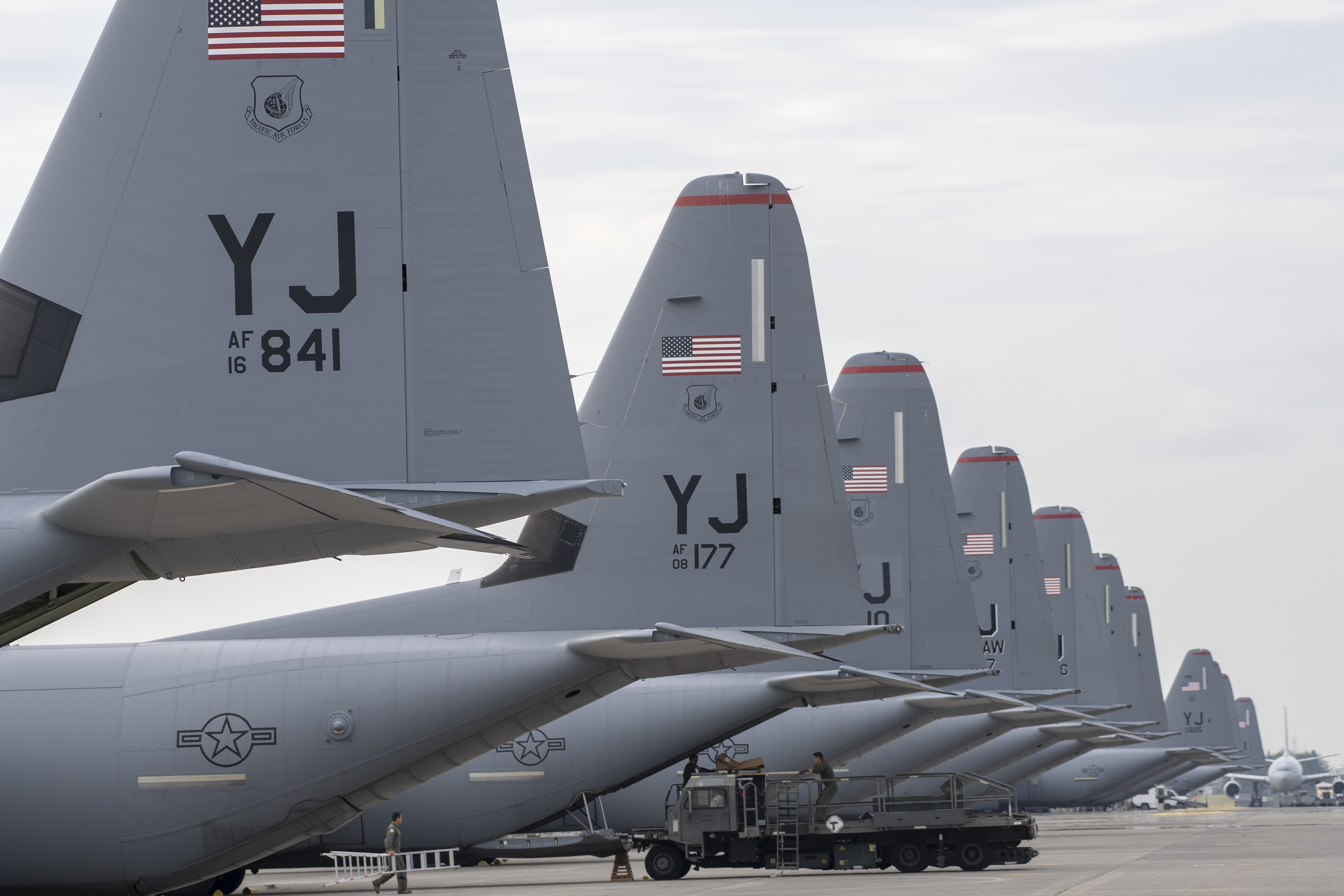
Air Force C-130J Super Hercules aircraft sit on the flightline at Yokota AB, Japan, April 27, 2018. USAF photo by Yasuo Osakabe.
Yokota Air Base, Japan, is ramping up its C-130J operations after receiving its last Super Hercules in April and preparing its crews for operations on the newer tactical airlifter.
The base finished its transition away from older C-130H models in April, and since then has been showcasing the increased range, payload, and speed available for “increased flexibility” in USAF operations across the Pacific, said Col. Kenneth Moss, commander of the 374th Airlift Wing.
Missions really started in the February-March timeframe as more aircrew became qualified on the aircraft, said Maj. Cerre Dolby, a C-130J pilot who flew the 12th J-model from Lockheed Martin’s facility in Marietta, Ga., to Yokota in April. These missions have included exercises such as Vigilant Ace, Cope North, and Red Flag-Alaska, along with “some trash hauling”—movement of cargo between bases. Locally, the aircraft fly regular airdrop training to a range near Mount Fuji along with practicing defenses, such as punching flares, at a range over the Sea of Japan.
The biggest change from the H-model to the J-model has been on account of the improved engines. Dolby said the four new Rolls-Royce AE 2100 engines, which produce 25 percent more power, is “like adding another engine.”
The C-130’s “bread and butter” is taking off and landing on short fields, limiting how much cargo it can carry. The improved engines mean the aircraft can carry more and still “make the climb out of the airfields,” she said.
The aircraft is also longer than the older H-model, increasing its payload. The cockpit is modernized, which helps pilots and other aircrew focus more on flying and accomplishing their mission.
One capability the J-model does not have that the H-model did was the ability to carry external fuel tanks. This was a worry at first in the Pacific area of responsibility—they have to be able to tackle the “tyranny of distance” and make long flights such as direct from Japan to Alaska. However, the increased efficiency has so far shown that the C-130J can fly about the same range without tanks that the C-130H could fly with the tanks. Adding the tanks would increase drag to the point where they would not be effective, and an internal tank to increase distance would just take away cargo space, Dolby said.
The improvements of the aircraft were on display during Exercise Vigilant Ace 18. The exercise originally called for 14 C-130Js, but Yokota only had seven available. Air Mobility Command provided two more. Those nine aircraft flew 105 sorties in about four days, moving two fighter wings, with only one sortie lost to maintenance.
“You could not do that with the H-model,” Moss said, especially “with that number of aircraft” and on “that timeline.”
The training and mission set at Yokota is different from most other USAF missions, because while the aircrews train often to keep their “skills sharp,” there are a lot of real-world taskings.
“We know that the most important things we do are those tasked missions,” Dolby said. “You get a little more job satisfaction when you can participate in a humanitarian disaster relief mission, or last minute support to [distinguished visitors], those things are a little more rewarding.”